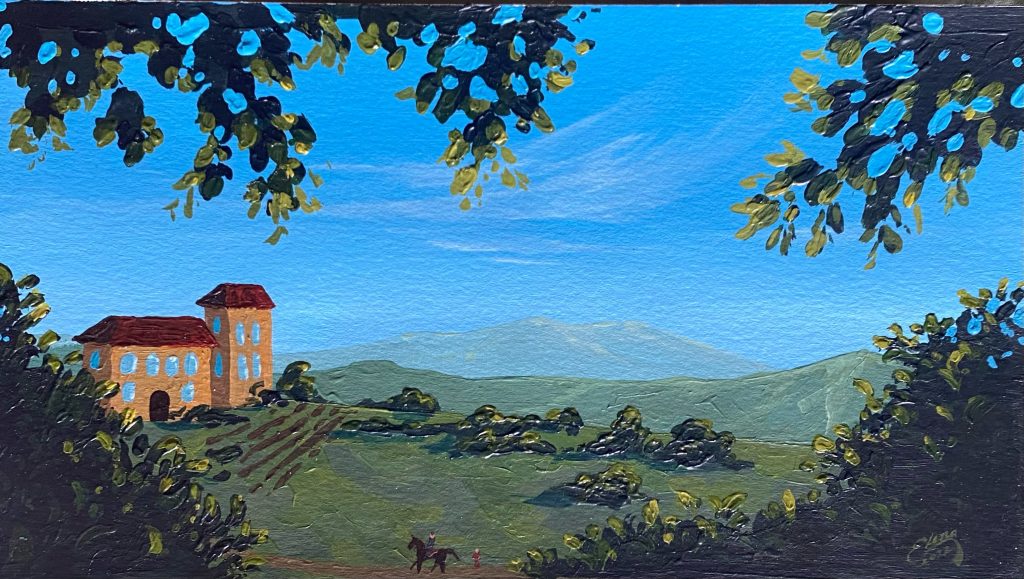Enjoy this post by Elena Echavarria, one of our Special Collections Freshman Fellows for the 2021-2022 academic year!

In the globally interconnected community in which we exist, translation has become a part of our daily life. We listen to songs whose lyrics we have to look up in order to sing, we watch movies that have been subtitled, and we read books written in languages we cannot even begin to understand. That is all to say, translation surrounds us, and we must navigate a world that depends on it.
However, I always thought about translation as a solely linguistic endeavor that transformed one language into another and failed to see it as a process that also bridges chronological divides. These divides are apparent when thinking of ancient texts. Still, these did not quite count in my head since, well, no one speaks Latin or ancient Greek beyond an academic setting, and the translation of these texts is not only helpful but necessary for people to access them. The chronological divides that I would encounter through the process of translating “Los novios aburridos”, a short play written and published in Spanish in 1817, were much subtler, though.
For a little context, this year, I had the privilege of being a part of Freshman Fellows in the Sheridan Libraries and working with Mackenzie Zalin, my advisor, to translate untranslated texts in Special Collections at JHU such as “Los novios aburridos.” Though I am a native Spanish speaker (since I was born and raised in Colombia) and while I recognized that a translation would be a significant time commitment, I never imagined that the actual translation process would be particularly challenging. I figured that I knew many words in Spanish and that I could quickly shift those words into English with some twists in the grammar and sentence structure at most. I was not prepared, however, to be faced with a very different version of Spanish than that which I speak and with societal structures that have fallen out of use.
My main goal for the translation project, upon which I embarked in the fall, was to create an easy-to-follow text that preserved the comedy and character of the original play. However, this goal was threatened with my first read-through of “Los novios aburridos.” When reading the play, I found that some of its sections and tangential plotlines were barely intelligible in the original Spanish, and I struggled to see how I could possibly make sense of them in English. The original language of the text itself was also incredibly challenging. The obstacles the original Spanish brought forth ranged from the antiquated spellings of a word, as was the case in dexaros, which in modern Spanish is spelled with a j instead of an x, to words and slang that have fallen entirely out of use, such as alondon (“let’s go, then!”), a loan from French allons donc that took us months to decipher. That is all to say, my initial assumption of being able simply to change one language into another was quite optimistic. Instead, I faced a fascinating set of words, connotations, and meanings to sift through to move forward with the project.
Another dimension of translation I was unaware of when I started the project was a social one since the play’s plot relies heavily on playing with class distinctions as many of the servants impersonate their employers and vice versa. The issue I found with these class distinctions was how outdated some of them felt, so translating the language of this particular class of elitism was very challenging and, at times, uncomfortable. This meant carefully curating the language I used in the translation so that the elitism in the original text was made clear to the reader without entirely alienating them. While translating the text of “Los novios aburridos” seemed daunting at first, I soon found comfort in the hours of sifting through words and phrases to best capture the original comedy of the play. I had a lot of fun playing with idioms in particular, since many of the Spanish sayings that popped up through the play don’t have a direct translation into English, which left me the freedom to find sayings that could match. This change of idioms means that the final product I created is not a direct translation of the Spanish text. The plot and characterization of the figures remains the same but some of the language and grammar structures were shifted in order to make a coherent play that can hold its own in a modern context.
Overall, this project was incredibly satisfying to complete because it was so challenging at times. I feel like it has not only brought me closer to the Spanish language, but that it has also allowed me to understand language and its subtleties a lot better than I could before.

